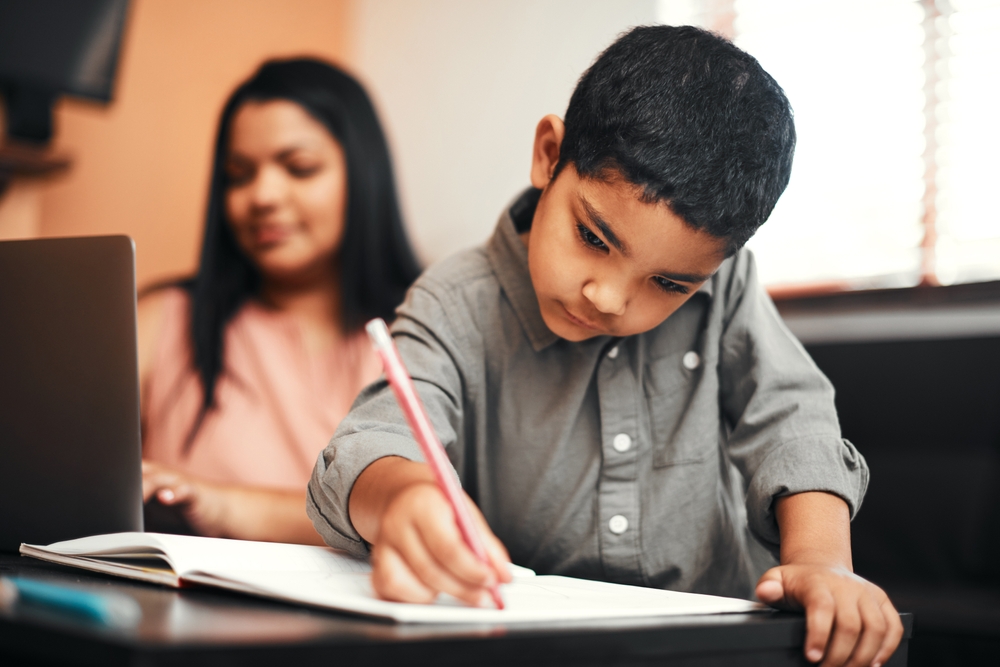.jpg)
.avif)
If you have children, or have ever seen a child eating at a restaurant, walking down the sidewalk, or sitting at a desk, then you know that kids have short attention spans. It only takes a loud noise, a sudden movement, or a shiny object, and all your energy is used up trying to rein a child back in to the task at hand.
With dyslexia, this struggle becomes even more difficult. Research shows that people (especially children) with dyslexia have a harder time concentrating and staying focused because of weaker working memory. Distractions are everywhere, and nothing is grabbing your attention long enough to keep you from jumping from one thought or activity to another.
Here at Redwood, we try to minimize distractions as much as possible. But we also employ strategies to maximize focus. Whether you’re old or young, we encourage you to try some of these for yourself:
- Engaging Multiple Senses: The more senses engaged in an activity, the greater the focus and the easier it is to STAY engaged. Instead of only reading a text, listen to it as you read along. When practicing the spelling of high-frequency words, say the letters out loud while you write them out. When working on memorizing sums of ten, get up and step on the numbers as you recite the math fact aloud. All these things together help improve concentration levels.
- Learning Tools: Learning tools help boost concentration, and confidence. At Redwood, we use visualization strategies and replay & retell procedures to record students’ thoughts and ideas as they listen and brainstorm. Students (especially non-readers) are encouraged to draw out the “movie” that is playing in their heads. For example, Redwood students are growing independent in the process of drawing pictures for the 5 wh’s (who, what, where, when, why) as they listen to a chapter book read aloud.
- Contextualizing Information: Information, especially new information is easier to understand when we provide a thorough context. This can be relating new concepts to things you already know or are already interested in. You will retain a longer interest in something if you can identify with it. This is the case for everything from friendships to rocketships. Build background knowledge quickly whenever possible, even if it’s just a simple Google image or History.com video clip.
- Repeating, Rehearsing, Reviewing: Every week at Redwood we have a new statement about discovering dyslexia. This week’s statement is, “If I have dyslexia, I need frequent reminders.” Just because you need to hear instructions or information about a thing/concept multiple times doesn’t mean you aren’t learning. In fact, reviewing information at regular intervals helps students with dyslexia both retain that information AND stay focused.
- Incentives: This isn’t bribery. It helps train our brains, as well as our students, that good concentration and participation result in good rewards. In a traditional school setting, these may come at the end of a quarter or even at the end of the year. For students with dyslexia, it is helpful to praise their hard work in the moment. Immediate gratification instills in them a desire to keep working hard. At Redwood, we have multiple incentives systems in place. Students earn points through Class Dojo for each 15-minute segment of successful work time. These points are added up and used to purchase extra privileges & rewards. Additionally, skittles are used to break up long, challenging work chunks into manageable tasks.
- Timers: We use digital kitchen timers and timers on our phones to help students know when an activity is finished or it’s time for a transition. The sound of the timer helps ease the abruptness of the change, and also aids in helping students grow their attention spans and responsibility to engage in learning during that time.
- Mental and Motor Exercises: Mental and motor challenges help students with dyslexia form new neurological connections in their brains, and they are fun! At Redwood, we have a daily “special” hour where the students attend art, debate, and coding. In addition to being a break from their core classes, these specials act as a way to engage the brain in different ways, sparking creativity and innovation. This is a great practice to cultivate at home. Make sure your child has access to games such as scrabble, sudoku, chess; or activities like playing music, dancing, or theater.
- Fidgets: Lastly, here at Redwood we understand that sometimes it’s just plain hard to sit still and focus. That’s why we encourage fidgets. They can be squishy, spinney, twisty--but the most important thing is that they help students release some of their energy while focusing on learning.
Want to read more? Check out some of the resources we used to write this post: https://www.dyslexiadeb.co.uk/single-post/attention-and-dyslexia
http://www.dystalk.com/talks/47-helping-your-child-at-home-concentration
http://www.see-n-read.com/ways-to-improve-concentration-among-children-with-dyslexia/

.svg)

.jpg)


